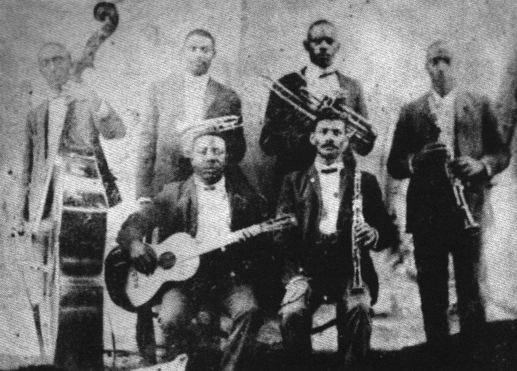Why Are Jazz Musicians Called Cats?
Being a jazz musician I am asked a lot of questions about jazz. Just the other day after a gig I was asked this question for the first time, why are jazz musicians called cats? I didn't have a great answer for the person, so when I got home I asked some of my older jazz musician friends. Read this article to learn lots of interesting facts about jazz and jazz culture.
Jazz musicians call each other cat as a sign of respect. No one knows exactly how it started, some people think it is because jazz musicians are out late at night, like cats.

A Brief History of Jazz
Jazz is a genre of music that has its roots in the African American communities of the late 19th and early 20th centuries. It is a genre that has evolved and transformed over the years, and it continues to be an important and influential genre in music today.
The origins of jazz can be traced back to the African American communities in New Orleans, Louisiana, in the late 19th century. At the time, New Orleans was a melting pot of different cultures, and the music that emerged from this community was a blend of African rhythms, European harmony, and the blues. This new form of music was called "jass," which later evolved to the name jazz.

One of the key figures in the early days of jazz was Buddy Bolden, a cornet player from New Orleans who is credited with creating the first jazz band. His band's music was characterized by its improvisation, syncopated rhythms, and the use of the blues. Bolden's band was influential in the development of jazz and set the stage for the next generation of jazz musicians.
In the early 20th century, jazz began to spread beyond New Orleans and became popular in other parts of the United States. Chicago and New York City were particularly important centers for jazz, and many jazz musicians moved to these cities to perform and record.

The 1920s and 1930s were the golden age of jazz, with jazz music and jazz musicians becoming increasingly popular and influential. Musicians like Louis Armstrong, Duke Ellington, and Benny Goodman were among the most popular jazz musicians of the time, and their music was enjoyed by audiences of all ages and backgrounds.
Jazz also played an important role in the Civil Rights Movement of the 1950s and 1960s. Many jazz musicians, such as Miles Davis, used their platform to speak out against racism and discrimination. Jazz music also served as a symbol of freedom and cultural expression for the African American community during this time.
During the 1950s, a new style of jazz emerged known as "bebop." This style of jazz was characterized by its complex harmonies, fast tempos, and virtuosic improvisation. Musicians such as Charlie Parker and Dizzy Gillespie were among the leading figures in the bebop movement.
In the 1960s and 1970s, jazz began to evolve once again with the emergence of "fusion" jazz. Fusion jazz combined elements of jazz with other genres of music, such as rock and funk. Musicians such as Miles Davis, Herbie Hancock, and John McLaughlin were among the leading figures in the fusion jazz movement.

Today, jazz continues to evolve and transform. There are countless subgenres of jazz, such as smooth jazz, jazz-funk, and acid jazz, and jazz musicians continue to push the boundaries of the genre. Jazz music is still performed and enjoyed around the world, and it continues to be an important and influential genre in music.
Top 5 Most Influential Jazz Albums
- A Love Supreme - John Coltrane
"A Love Supreme" by John Coltrane is a jazz album that was released in 1965 and is considered one of the most important and influential albums in the history of jazz. The album is a suite of four compositions that are arranged to reflect the spiritual journey of the artist and his gratitude to a higher power.
The album starts with the track "Acknowledgement" which is a powerful and intense piece that sets the tone for the entire album. Coltrane's saxophone playing is raw and emotive, and the piece builds to a climax with a repetitive phrase that serves as a mantra for the entire album: "A love supreme."
The second track, "Resolution," is a more contemplative piece that features a beautiful piano solo by McCoy Tyner. It serves as a contrast to the intensity of the first track and showcases Coltrane's ability to convey emotion through his playing.
The third track, "Pursuance," is a fast-paced and energetic piece that showcases Coltrane's virtuosic saxophone playing. The piece is a showcase of Coltrane's technical skills, and it demonstrates his ability to push the boundaries of jazz music.
The final track, "Psalm," is a spoken word piece that serves as a reflection on the spiritual journey that Coltrane has taken throughout the album. It's a powerful and moving conclusion to the album that leaves a lasting impression on the listener.
"A Love Supreme" is an album that is full of emotion and spirituality. It's a powerful and moving tribute to a higher power that showcases Coltrane's ability to convey emotion through his playing. The album is a must-listen for any jazz enthusiast, and it's a true classic that stands the test of time.
The album was recorded in one session and it's a masterpiece of jazz and one of the most important albums of the 20th century. It's an album that's deeply personal and spiritual, and it's a testament to Coltrane's artistic vision and his ability to push the boundaries of jazz music. It's a perfect example of Coltrane's ability to convey emotion and spirituality through his playing, and it's an album that continues to inspire jazz musicians today.
- Time Out - Dave Brubeck
"Time Out" by Dave Brubeck is a jazz album that was released in 1959 and it's considered one of the most groundbreaking and influential albums in the history of jazz. The album features the Dave Brubeck Quartet and is known for its innovative use of odd time signatures, particularly in the hit track "Take Five," which is in 5/4 time.
The album opens with "Blue Rondo a la Turk," which is a playful and upbeat piece that showcases the quartet's ability to navigate complex rhythms with ease. The use of a 9/8 time signature gives the piece a unique and exotic feel, making it a standout track on the album. If you're inspired and want to learn how to play piano, you should check out our piano lessons in Ann Arbor.
The album's most famous track, "Take Five," is a true jazz classic. The 5/4 time signature gives the piece a distinctive and catchy feel, and the saxophone solo by Paul Desmond is one of the most memorable in jazz history. The track was a hit and it became the first jazz single to sell over a million copies, making it the most successful jazz track of all time.
The album also features the ballad "Strange Meadow Lark," which showcases the quartet's ability to create beautiful and evocative music. The song has a contemplative and introspective feel, and it's a great example of the quartet's ability to convey emotion through their playing.
"Time Out" is an album that pushed the boundaries of jazz music and introduced new rhythms and time signatures to the genre. The album's innovative use of odd time signatures and its ability to seamlessly blend different styles of music, such as classical and folk, makes it a true masterpiece of jazz.
The album's success helped to establish Dave Brubeck and his quartet as jazz legends. It's an album that continues to be celebrated and appreciated by jazz enthusiasts, and it's a must-listen for any jazz fan. The album was a commercial success and it's widely considered one of the greatest jazz albums of all time, and it still sells well today, it's one of the best-selling jazz albums of all time.
- Jazz at Massey Hall - The Quintet
"Jazz at Massey Hall" is a live jazz album by the quintet of Charlie Parker, Dizzy Gillespie, Bud Powell, Charles Mingus, and Max Roach. It was recorded on May 15, 1953, at Massey Hall in Toronto, Canada and it is considered one of the most important and iconic live jazz recordings in history.
The album is a true showcase of the virtuosity of the quintet members, each one of them being a master of their instrument and one of the most influential jazz musicians of their time. Charlie Parker's saxophone playing is raw and emotive, Dizzy Gillespie's trumpet playing is fiery and virtuosic, Bud Powell's piano playing is masterful and innovative, Charles Mingus's bass playing is groovy and propulsive, and Max Roach's drumming is intricate and dynamic.
The album features a mix of standards and original compositions, and the quintet's improvisation skills are on full display throughout the album. The album includes classics such as "Perdido," "Salt Peanuts," and "All the Things You Are," as well as original compositions like "Hot House," "Wee," and "A Night in Tunisia." Each one of the tracks showcases the quintet's ability to take a familiar tune and give it a fresh and new interpretation through their improvisation.
The album's sound quality is also noteworthy, it was recorded live, and it captures the energy and excitement of the performance, making it feel like you're in the audience. It gives you a sense of being in the room with the quintet and it's one of the reasons why this album is considered one of the most authentic and vital live jazz recordings.
"Jazz at Massey Hall" is an album that is considered a must-listen for any jazz fan. It's a true classic that stands the test of time and it's a testament to the virtuosity and creativity of the quintet members. The album is a historic document of jazz music, and it's a reminder of the incredible talent and impact that these musicians had on jazz and music as a whole.
- Kind of Blue - Miles Davis
If you want to learn more about Kind of Blue I have a whole article about Miles Davis right here: Was Miles Davis Blind?
Getz/Gilberto - Stan Getz & Joao Gilberto
"Getz/Gilberto" is a jazz album by saxophonist Stan Getz and Brazilian singer and guitarist João Gilberto, released in 1964. The album features the vocal stylings of Gilberto and his wife Astrud Gilberto, and it's considered one of the most important and influential jazz albums of all time.
One of the standout tracks on the album is "The Girl from Ipanema," which features Astrud Gilberto's vocals and became a worldwide hit. The song's memorable melody and lyrics, which were written by Antonio Carlos Jobim and Vinicius de Moraes, helped to popularize the Bossa Nova style of music and make it a mainstream success.
Another standout track on the album is "Corcovado (Quiet Nights of Quiet Stars)," which showcases Getz's virtuosic saxophone playing and Gilberto's smooth and melodic guitar playing. The song's beautiful melody and lyrics, which were also written by Jobim, make it a true classic of the Bossa Nova genre.
I hope you have enjoyed this article all about jazz and jazz history. Now you finally know why jazz musicians are called cats. And if you are new to jazz you now have some albums you should check out. Thanks for reading all the way to the end!



